Smile is a tree as special as its name, which sounds archaic and poetic at the same time. It is a species that brings tranquility, which our ancestors knew, using the wood to make swings for children to sleep on, beds or to clad the walls of houses. Smile is one of the hardiest species, surviving even in winter at temperatures below -40°C. It also grows at high altitudes, above 2500m, and is used for soil stabilization and as forest shelter to prevent avalanches. Although it is not an industrially important wood, as it is a protected species, it is a very interesting one to study.
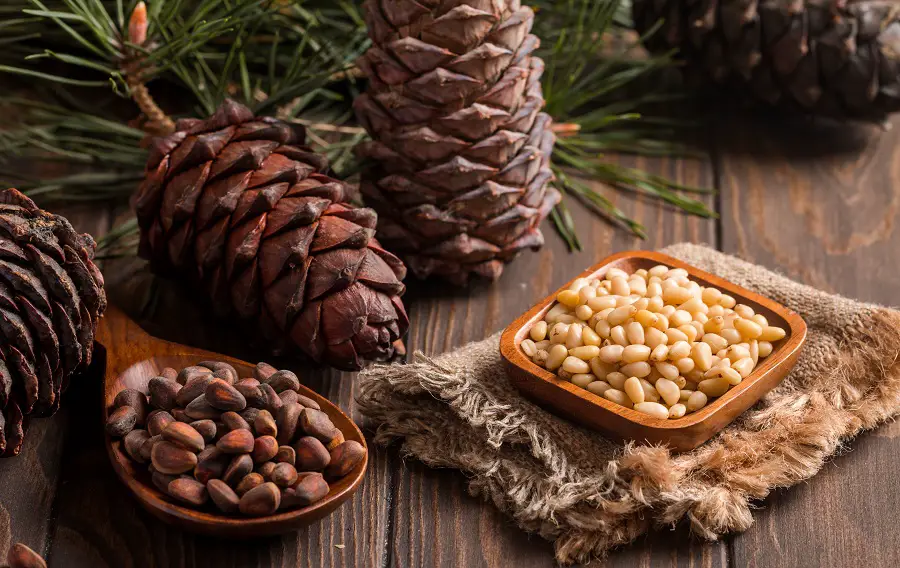
King of the Alps
Smiling is a close relative of pin, part of the genus Pinus, scientific name Pinus cembra. In English you can find it as Swiss pine (Swiss pine), Swiss stone pine (Swiss stone pine) or just stone pine, Arolla pine, Austrian pine (Austrian pine) or European cedar (European cedar). In French it is stone pinein Italian Swiss stone pine or stone pine, in German zirbelkiefer, zirbe or zirm, and the Swiss call it arve or arbe.
It grows in alpine and subalpine areas of the Alps, Carpathians and Tatra Mountains, from 1200 m to 2900 m. It is a pine that grows only in Europe, mainly in south-western France, northern Italy, Austria, Switzerland, Germany, the Czech Republic, Slovakia, Poland, Ukraine, Romania, Switzerland, Czech Republic, Poland, Slovakia and Ukraine. It is found in the Călimani, Parâng, Rodnei, Făgăraș and Retezat mountains, where it can reach over 2000 m. It likes light and water and thrives well as a single specimen, but it also grows with the pine larita. Withstands extreme temperatures from below -40°C to above +45°C.
Being so hardy, it is commonly found in the Alps at high altitudes, above the limit where trees are usually found. Hence the name King of the Alps and the ability to withstand avalanches, heavy snows and high ozone.
Deep-rooted conifer that can live for over 1000 years
Smile grows to 20-25 m tall, rarely taller, and 1.5-2 m in diameter. The taproot deeply embedded in the ground gives it the strength to withstand high altitude winds. The trunk is covered with a grayish-brown bark that darkens and becomes scaly and fissured at maturity. The crown is narrow and pyramidal up to 50-60 years of age, but after 100 years it becomes broader, rounded, slightly irregular and sometimes with several tips. It is a long-lived tree, reaching over 1000 years.
The leaves are in the form of slender needles with three edges, in groups of 5, stiff, glossy, dark green, up to 10 cm long. The cones are 10 cm long, oval, upright, brownish-purple at first, brownish when mature. Inside are the seeds, which are around 5 cm long and, unlike pine, have no fins. They are spread by birds and forest birds. The seeds are edible, and are misnomer pine nuts.
Wild iris grows very slowly, reaching maturity after 50, sometimes even 80 years. However, species have also been developed that can be grown as decorative plants in parks in harsher climates. They don't take as long to mature, bearing fruit after just 12 years. The wild one is protected, as it is illegal to cut it down. It has been on the International Union for Conservation of Nature's Red List since 2006. The expansion of ski resorts has not helped the species, which is endangered across Europe. Fortunately, afforestation programs have been adopted that are restoring the smile's chances.
Smile wood - appearance and characteristics
Smiling is a resinous, having the characteristics of this type of wood, with no special designs or colors to personalize it, as is the case with the foioas. Cross section through the trunk shows the difference between the yellowish sapwood and the reddish-brown heartwood, with pinkish tinge to the younger wood and more prominent brown as it matures.
The fiber is not always straight and uniform due to growing conditions sometimes resulting in twisted fiber. Resiniferous canals are present, evenly distributed, the odor given by the resin being strong and specific. The difference between annual rings is visible, the rings are narrow, and the transition from early to latewood is not very abrupt. Knots are visible on solid and veneer boards.
Different growing conditions result in very different densities of specimens, ranging from 370 kg/m³ to 560 kg/m³. Also because of the conditions, the wood can grow twisted and its mechanical properties suffer. In general, it is a soft and light wood with little dimensional variation and moderate strengths. It dries quickly without major cracking. It carves and turns easily. The high resin content should be taken into account when finishing, as it can cause problems.
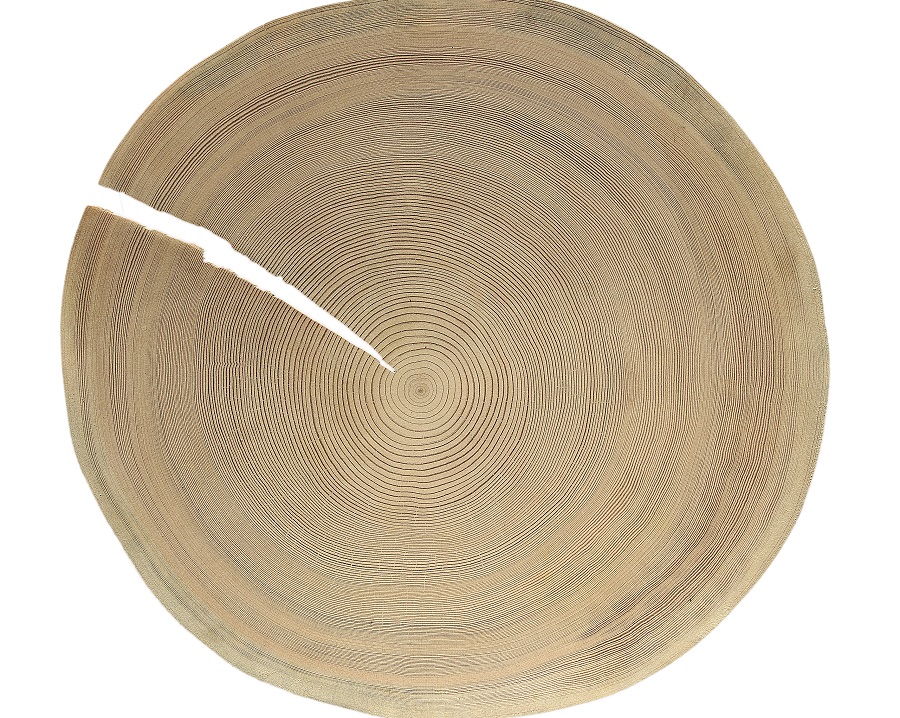
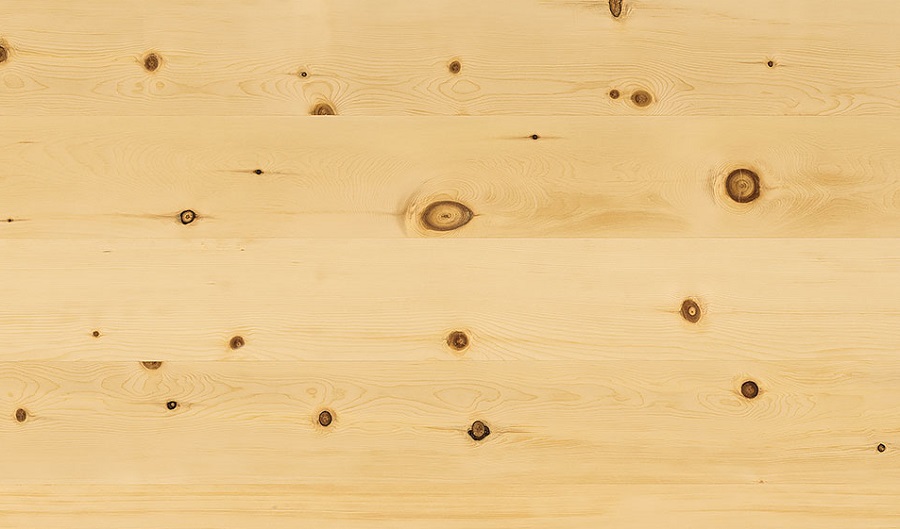
A tree with many qualities that we enjoy in small measure
In the past, wood was used extensively in Austria, Switzerland and Germany as firewoodin furniture manufacturing and in construction. The slow growth has meant that in many areas it has been replaced by larch, a tougher, faster-growing and straighter resinous tree. The development of ski resorts hasn't helped it much either, with deforestation for slopes and gondola runs reaching high altitudes. The wood is now used to a small extent, mainly by craftsmen, for carving (Val Gardena in Italy is famous), turning and for inlay.
Smile wood, however, has special qualities due to the resin and oils it contains. It is a calm-inducing wood, and it is known that people who sleep on a Smilewood bed sleep much more soundly. This was confirmed in a 2003 study published by Joanneum Research Institute (Weiz, Austria) The study showed that the smell of wood reduces the pulse rate, inducing deep sleep and neurovegetative relaxation. Relaxation during the night also means a lower heart rate during the day, which 'saves' the heart an hour's work per day (3500 beats). This also explains the quieter sleep of children in smiling wooden swings.
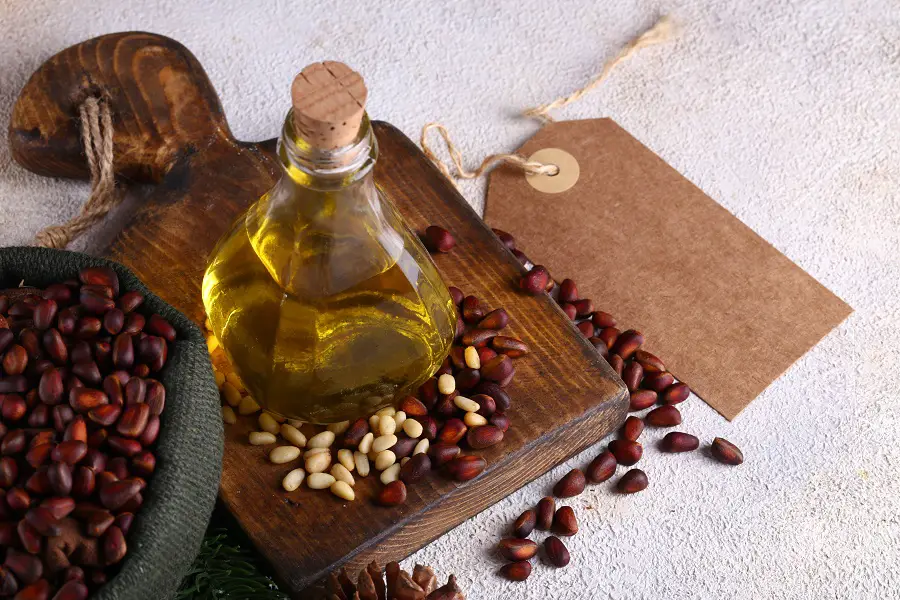
Because it is now quite hard to find furniture made of hardwood or lumber to upholster the walls, pillows stuffed with fine sawdust can be used. So everyone can enjoy a peaceful night's sleep. Relaxation can also be induced with the oil extracted from the needle/leaf of the smile. The fragrance released is fresh and gentle, woody, citrus, balsamic, slightly floral. The scent can be defined as a blend of pine, lemon, myrtle, vanilla and woody. The oil helps breathing and allows the body to relax and regenerate.
These oils also have an antibacterial effect on wood. It rarely mildews on its surface, making it suitable for kitchen utensils or food storage boxes. Also thanks to the oil, zink is resistant to insect attack. It has been found that moths do not breed in places where there is zamber wood. A few zink hangers in the cupboard will make moths disappear forever. In the absence of hangers, the same effect can be achieved with a bag of smyrtle wood shavings or a few twigs.
Smile seeds and cones are used in food. In the Alps the seeds are called pine nuts and are eaten in the same way as ground hazelnuts. The cones are used for distilled spirits or liqueurs. It is also customary for alcoholic drinks to be flavored with slices of the cones.
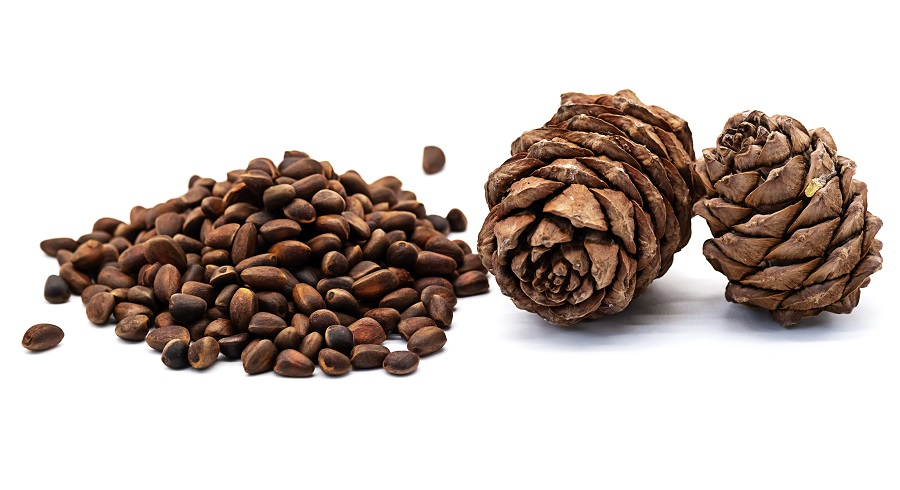
One of the most important uses of zel is to stabilize soil and create forest barriers to stop avalanches. In the very high altitudes of the Alps, the smile is truly king. A king that keeps rocks in their place and stops snow sliding down the slopes.
I hope you find the information interesting. We always welcome additions. And if you have any questions or queries, please leave them below in the dedicated space. I'll be sure to reply.


























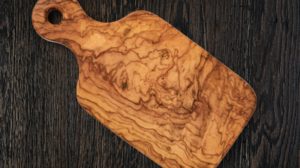
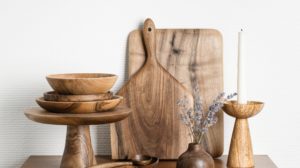
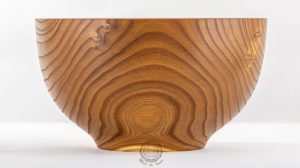
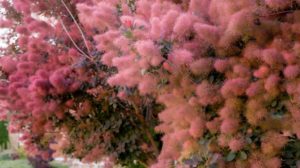

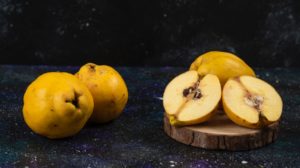




Interesting. I subscribed to the Wood Magazine newsletter for these articles you write about different varieties of trees.
You said that the zambrus grows from 1200m upwards. What are the chances of it catching on if I want to plant it in my backyard in the Brasov area, altitude about 600m?
Thank you
Thanks for following us.
You stand a chance if you buy one of the controlled plantations. It's a species modified for park planting that adapts very well to low altitudes. It needs water and light, likes drained soils (sandy, stony), but thrives in lush ones and does well alone without other trees around. It grows faster than wild smiley, rots faster, but has the same calming, soothing properties. We've also found specialist sites selling smile saplings.
where I could buy sawdust, shavings, oil, even some splint-like planks...thanks!
Oil can be found online, for example at emag. Plants can be found in nurseries (you can also find them on the net).
Leftovers you should look for on Facebook profile groups - Woodworkers, Carpenters, Woodworking.